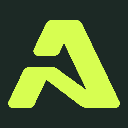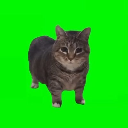-
 bitcoin
bitcoin $112715.707551 USD
-1.71% -
 ethereum
ethereum $4101.475385 USD
-3.01% -
 tether
tether $1.000644 USD
-0.02% -
 bnb
bnb $1207.619465 USD
-6.77% -
 xrp
xrp $2.501451 USD
-3.98% -
 solana
solana $202.947124 USD
-3.32% -
 usd-coin
usd-coin $1.000295 USD
0.04% -
 dogecoin
dogecoin $0.203884 USD
-4.47% -
 tron
tron $0.317154 USD
-1.72% -
 cardano
cardano $0.695009 USD
-4.43% -
 hyperliquid
hyperliquid $38.853961 USD
-8.23% -
 chainlink
chainlink $18.988674 USD
-4.64% -
 ethena-usde
ethena-usde $1.000233 USD
-0.03% -
 stellar
stellar $0.337050 USD
-3.63% -
 bitcoin-cash
bitcoin-cash $536.861728 USD
-1.28%
Is the volatility of Quant(QNT) high? Is it suitable for short-term or long-term investment?
Quant (QNT) is highly volatile due to market sentiment, tech developments, and economic trends, making it suitable for short-term trading but risky for long-term investment.
Apr 30, 2025 at 04:57 pm

The volatility of Quant (QNT) is a critical factor that potential investors consider when deciding whether to engage with this cryptocurrency. Volatility refers to the rate at which the price of a cryptocurrency increases or decreases for a set of returns. Quant (QNT) is known for its relatively high volatility, which can be attributed to various factors including market sentiment, technological developments, and overall market trends in the cryptocurrency space. Understanding the volatility of QNT is essential for determining its suitability for short-term or long-term investment.
Factors Contributing to QNT's Volatility
Several factors contribute to the high volatility of Quant (QNT). One primary factor is the overall market sentiment towards cryptocurrencies. The crypto market is highly speculative, and news about regulatory changes, technological advancements, or shifts in investor interest can lead to significant price fluctuations. Another factor is the technological developments within the Quant ecosystem. As a project focused on blockchain interoperability, any updates or partnerships can have a direct impact on QNT's price. Lastly, the broader economic environment and trends in the cryptocurrency market can also influence QNT's volatility. Understanding these factors can help investors better navigate the risks associated with investing in QNT.
Analyzing QNT's Historical Price Movements
To gain a deeper understanding of QNT's volatility, it's helpful to examine its historical price movements. Over the past few years, QNT has experienced significant price swings. For instance, during periods of high market optimism, QNT's price has surged, reflecting the bullish sentiment among investors. Conversely, during market downturns, QNT's price has also dropped sharply, indicating its sensitivity to broader market trends. By analyzing these historical patterns, investors can better gauge the potential risks and rewards associated with QNT.
Suitability for Short-Term Investment
Given its high volatility, Quant (QNT) can be suitable for short-term investment for those who are comfortable with the associated risks. Short-term traders often look for assets that exhibit significant price movements, as these can provide opportunities for quick profits. To engage in short-term trading with QNT, investors need to stay updated with the latest news and developments in the Quant ecosystem and the broader cryptocurrency market. Utilizing technical analysis tools can also help in identifying potential entry and exit points. However, it's important to note that short-term trading involves a higher level of risk, and investors should be prepared for the possibility of significant losses.
Suitability for Long-Term Investment
For those considering long-term investment, Quant (QNT) presents a different set of considerations. Long-term investors typically look for assets with strong fundamentals and a clear growth trajectory. Quant's focus on blockchain interoperability and its potential to revolutionize how different blockchains interact with each other could make it an attractive option for long-term investment. However, the high volatility of QNT means that long-term investors need to have a strong conviction in the project's future and be willing to weather potential price fluctuations. Diversifying a portfolio and not putting all funds into QNT can help mitigate some of the risks associated with its volatility.
Risk Management Strategies for QNT Investors
Regardless of whether one is considering short-term or long-term investment in QNT, effective risk management strategies are crucial. For short-term traders, setting stop-loss orders can help limit potential losses. A stop-loss order is an order placed with a broker to sell a security when it reaches a certain price, thus helping to minimize losses. Long-term investors might consider dollar-cost averaging, which involves investing a fixed amount of money at regular intervals, regardless of the asset's price. This strategy can help reduce the impact of volatility over time. Additionally, staying informed about the latest developments in the Quant ecosystem and the broader cryptocurrency market is essential for making informed investment decisions.
Tools and Resources for Monitoring QNT's Volatility
To effectively manage investments in Quant (QNT), investors can utilize various tools and resources to monitor its volatility. Cryptocurrency price tracking websites such as CoinMarketCap and CoinGecko provide real-time price data and historical charts, which can be invaluable for both short-term and long-term investors. Technical analysis platforms like TradingView offer advanced charting tools and indicators that can help traders identify potential price movements. News aggregators and social media platforms can also be useful for staying updated with the latest news and developments in the Quant ecosystem. By leveraging these tools, investors can make more informed decisions about their QNT investments.
Frequently Asked Questions
Q: How does Quant (QNT) compare to other cryptocurrencies in terms of volatility?A: Quant (QNT) is generally considered to be more volatile than some of the more established cryptocurrencies like Bitcoin (BTC) and Ethereum (ETH). However, it may be less volatile than some smaller, less established altcoins. The level of volatility can vary based on market conditions and specific events affecting the Quant ecosystem.
Q: Can I use leverage when trading Quant (QNT)?A: Yes, many cryptocurrency exchanges offer leverage trading for QNT. Leverage allows traders to borrow funds to increase their trading position, which can amplify both potential gains and losses. It's important to understand the risks associated with leverage trading and to use it cautiously.
Q: How can I stay updated with the latest developments in the Quant ecosystem?A: To stay updated with the latest developments in the Quant ecosystem, you can follow Quant's official social media channels, subscribe to their newsletter, and join relevant cryptocurrency forums and communities. Websites like Medium and Twitter are also good sources for news and updates from the Quant team and the broader cryptocurrency community.
Q: What are the key risks associated with investing in Quant (QNT)?A: The key risks associated with investing in Quant (QNT) include its high volatility, potential regulatory changes affecting the cryptocurrency market, technological risks related to the development of the Quant ecosystem, and market risks stemming from broader economic trends. Investors should carefully consider these risks before making any investment decisions.
Disclaimer:info@kdj.com
The information provided is not trading advice. kdj.com does not assume any responsibility for any investments made based on the information provided in this article. Cryptocurrencies are highly volatile and it is highly recommended that you invest with caution after thorough research!
If you believe that the content used on this website infringes your copyright, please contact us immediately (info@kdj.com) and we will delete it promptly.
- BTC, ETH, and Crypto Presales: Navigating the Storm with MoonBull & LivLive
- 2025-10-15 11:05:13
- BlackRock's Bitcoin ETF Buzz Down Under: Australia's Crypto Scene Heats Up
- 2025-10-15 11:45:15
- Trump, Bitcoin, and Trump Media: A New York Minute on Crypto's Latest Twist
- 2025-10-15 11:05:13
- Altcoin Season Incoming? Historical Setups and Trends to Watch
- 2025-10-15 11:45:15
- Crypto Scam Crackdown: Cambodian Executive, Bitcoin Seizure, and a $14 Billion Heist
- 2025-10-15 11:10:00
- Bitcoin's Wild Ride: Structural Demand Survives the Liquidation Tsunami
- 2025-10-15 11:10:00
Related knowledge

Practical parameter settings for a Bitcoin multi-timeframe moving average system
Sep 18,2025 at 10:54pm
Optimizing Timeframe Combinations for Bitcoin Trading1. Selecting appropriate timeframes is crucial when building a multi-timeframe moving average sys...

How can I filter out false breakouts in Dogecoin high-frequency trading?
Sep 22,2025 at 01:00am
Understanding False Breakouts in Dogecoin Trading1. A false breakout occurs when Dogecoin's price appears to move beyond a defined support or resistan...

Techniques for identifying tops and bottoms in the Bitcoin on-chain NVT model
Sep 20,2025 at 07:54pm
Understanding the NVT Model in Bitcoin Analysis1. The Network Value to Transactions (NVT) ratio is often described as the 'P/E ratio' of the cryptocur...

What does the surge in open interest in Bitcoincoin futures mean?
Sep 20,2025 at 11:18pm
Understanding the Surge in Dogecoin Futures Open Interest1. A surge in open interest within Dogecoin futures indicates a growing number of active cont...

How can I use the Ethereum USDT premium to gauge market sentiment?
Sep 18,2025 at 11:55pm
Understanding the Ethereum USDT Premium1. The Ethereum USDT premium refers to the price difference between USDT (Tether) traded on Ethereum-based plat...

What should I do if Ethereum staking yields decline?
Sep 20,2025 at 06:18am
Understanding the Causes Behind Declining Ethereum Staking Yields1. The Ethereum network transitioned to a proof-of-stake consensus mechanism with the...

Practical parameter settings for a Bitcoin multi-timeframe moving average system
Sep 18,2025 at 10:54pm
Optimizing Timeframe Combinations for Bitcoin Trading1. Selecting appropriate timeframes is crucial when building a multi-timeframe moving average sys...

How can I filter out false breakouts in Dogecoin high-frequency trading?
Sep 22,2025 at 01:00am
Understanding False Breakouts in Dogecoin Trading1. A false breakout occurs when Dogecoin's price appears to move beyond a defined support or resistan...

Techniques for identifying tops and bottoms in the Bitcoin on-chain NVT model
Sep 20,2025 at 07:54pm
Understanding the NVT Model in Bitcoin Analysis1. The Network Value to Transactions (NVT) ratio is often described as the 'P/E ratio' of the cryptocur...

What does the surge in open interest in Bitcoincoin futures mean?
Sep 20,2025 at 11:18pm
Understanding the Surge in Dogecoin Futures Open Interest1. A surge in open interest within Dogecoin futures indicates a growing number of active cont...

How can I use the Ethereum USDT premium to gauge market sentiment?
Sep 18,2025 at 11:55pm
Understanding the Ethereum USDT Premium1. The Ethereum USDT premium refers to the price difference between USDT (Tether) traded on Ethereum-based plat...

What should I do if Ethereum staking yields decline?
Sep 20,2025 at 06:18am
Understanding the Causes Behind Declining Ethereum Staking Yields1. The Ethereum network transitioned to a proof-of-stake consensus mechanism with the...
See all articles


























![Staking ATH: How To Stake $ATH in October 2025 with 523% APY — [Step-By-Step Guide] Staking ATH: How To Stake $ATH in October 2025 with 523% APY — [Step-By-Step Guide]](/uploads/2025/10/15/cryptocurrencies-news/videos/staking-ath-stake-ath-october-apy-stepstep-guide/68eef94d80903_image_500_375.webp)















































